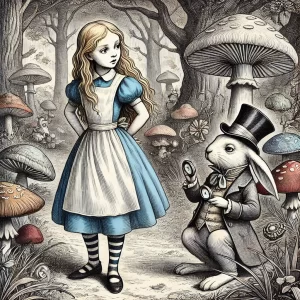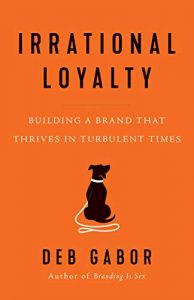Top 10 Classics Everyone Should Read
Reading the classics is a good idea, in theory. They’re supposed to make you a more well-rounded and literate individual. You just don’t want to choose the wrong ones because some of the supposed classics are real snoozers. If you were turned off the classics as a kid, well, maybe you had the misfortune of being handed the wrong reading list by that literature snob in the front of the classroom. To get you back into it, here’s a real reading list of some of my favorite classics.
White Fang
White Fang is a wolf-dog hybrid rescued from the hazards of the wild by a Native American who recognizes his mother as a wolf-dog who had fled the tribal village during a famine. Rejected by the other dogs, he becomes a deadly fighter whose aggressiveness earns him his moniker. He is eventually sold to an unscrupulous white man who is involved in a dog-fighting ring. A gold hunter named Weedon Scott breaks up the fight that nearly kills White Fang, forces the owner to sell Fang to him, and gradually tames him. Returning to a family estate in California that the still not-quite-civilized White Fang has to get used to, he eventually gets the chance to repay Weedon Scott for saving his life. He still looks like a wolf, essentially a wild uncivilized creature, but his new family comes to accept him and call him “The Blessed Wolf.” A bit brutal in places, but for the time in which it was written, it is a good commentary on the treatment of animals and society’s expectations of conformity even when it did an individual very few favors.
Don Quixote
This is the book that originated the phrase, “Tilting at Windmills”. Don Quixote reads one fictional book of chivalry too many, becomes a knight in his own mind and sets off on a series of comical adventures, in which he usually “tilts” at entirely the wrong thing. He chooses a squire who tries to keep him out of trouble, occasionally deceives him, and attempts to convince him that he isn’t really seeing giants. Don Quixote’s madness or idealism (depending on interpretation) blinds him to the fact that his intended knightly deeds are doing more harm than good. It also makes him vulnerable to a series of practical jokes. He continues to persist in the face of several attempts to bring him back to sanity until a fateful encounter with another “knight”. Society has defeated him, and readers through the centuries have debated whether this two-part novel is a comedy in which Don Quixote’s adventures are meant to be comical, or a tragedy in which an idealistic man sets himself against a society that opposes nobility and idealism.
The Strange Case of Dr. Jekyll and Mr. Hyde
Concerned that his less socially acceptable impulses will cause him to lose respectability, Dr. Jekyll accidentally unleashes his own baser side while researching ways to eliminate it. His “evil twin” becomes Mr. Hyde, a diminutive man without a conscience whose foul deeds horrify Jekyll to the point where he vows to stop the transformations rather than risk discovery. He fails and, sensing that Hyde will eventually become the dominant personality, decides to put a permanent stop to the madness. Like many of the best horror tales, this one was inspired by a nightmare: “I was dreaming a fine bogey tale,” Robert Louis Stevenson is reported to have said to his wife upon waking. He wrote the first two drafts in an intense writing spree that some biographers speculated was assisted by drugs such as cocaine. In fact, he had been going through a well-documented period of ill health during this period, which may have both spurred the nightmare and given him ample time to write.
The Scarlet Letter
Nathaniel Hawthorne tackles sin, morality and Puritan legalism in ways that were considered shocking to the religious leadership of the time. When Hester Prynne gives birth to a child as a result of adultery, she is forced to appear in public wearing a scarlet “A”. She repeatedly refuses to name the father, Minister Arthur Dimmesdale. When her long-lost husband appears on the scene, he becomes the town physician under an assumed name and takes up residence with Dimmesdale. He discovers that Dimmesdale is the father and swears revenge. Now an outcast, Hester Prynne moves to the edge of town with her increasingly unruly daughter. She ultimately decided it would be best to return to England rather than continue to try conforming to Puritan society and is joined by Prynne on the ship that will ferry her away from a community that despises her. When initially released, this book was criticized by religious publications for promoting poor morality. Even so, it was an instant hit with the American reading public, partly based on Nathaniel Hawthorne’s popularity as an author.
Wind in the Willows
Toad has become well-known for his flamboyance and fortune, which he generally blows on a series of ill-considered obsessions. Stern discussions with friends like the unsocial and stern Badger do not help him see that his lifestyle could lead him into serious trouble someday. When his horse and cart get bowled over by the reckless drivers of a newfangled “horseless buggy,” his friends are more upset about it than he is. He can only sit there marveling at this new wonder, which he describes with nonsense phrases in his inability to contain his excitement (“Here today, into next week tomorrow!”). Upon returning home, he pursues his new interest in cars to the point of getting thoroughly lost, getting arrested, escaping, and suffering through a series of unpleasant adventures on the way home. At the low point, he is taken for exactly what he is. Even a rich and flamboyant Toad is still a Toad. Is it enough to cure Toad of his flamboyance and obsessions?
Moby Dick
A classic tale of the often ill-advised nature of revenge, Moby Dick centers around one whaling captain’s quest for revenge against the white whale who bit off his leg while defending itself against a whaling vessel’s attack. Like most people who are obsessed with revenge, neither Captain Ahab nor most of the crew have a happy ending. The story was inspired by genuine events. Whale hunting was just beginning a steady decline during the period that Moby Dick was written in and there were cases in which the whale fought back, causing casualties like the sinking of the Essex. There was also an albino sperm whale named Mocha Dick, who was known for attacking whaling ships and was respected, if not feared, by whaling crews. In fact, the lengthy Moby Dick contains several passages that describe the whaling business in sometimes graphic detail. Initially panned by critics, Moby Dick spent a long time underground before being revived as the classic it is now.
The Adventures of Tom Sawyer
Asking whether The Adventures of Tom Sawyer or The Adventures of Huckleberry Finn came first is like asking which came first, the chicken or the egg. It’s very difficult to enjoy one without also enjoying the other. However, for the record, Tom Sawyer came first. Growing up along the Mississippi River, Tom Sawyer and his friends have to deal with puppy love and the classic superstitions of 18th-century boys (curing warts with a dead cat!). Tom Sawyer also delves into the morality of having witnessed a murder and the framing of a town drunk who, though not exactly considered a role model for every young child in town, is anything but a murderer. Though Tom Sawyer has sworn to tell no one what he has seen, his conscience gets the better of him, he ends up saving innocent lives, and the true murderer ends up facing a unique sort of justice. Along the way, he plays at being pirates with a group of friends and shows up at his own funeral.
To Kill A Mockingbird
A six-year-old girl named Scout is a witness to racial injustice when a black man named Tom is falsely accused of raping a white woman. In fact, the woman is the daughter of the town drunk and had been caught making romantic overtures towards the accused man that the now-defendant rejected. Scout’s father is assigned to defend Tom, making him highly unpopular with a town where strong racial attitudes persist and he faces threats ranging from taunts to a lynch mob. Despite the overwhelming evidence in Tom’s favor, he is convicted and dies while trying to escape. The accusers’ reputation has been ruined and the town drunk vows revenge, only to die by falling on his own knife while attacking the children. Initial reactions were favorable with many critics calling it an “undemanding read” that was likely to become popular with teenagers, though some critics did say that a six-year-old with the tone of an adult might be a little implausible.
Gulliver’s Travels
Gulliver finds himself capture by tiny Lilliputians, an obvious analogy of “small”, petty people who think they’re more important than they really are. Where a lot of people might have escaped their bonds and trampled the village, Gulliver promises to behave. He does good for the village and saves it from invasion, but is forced to escape after refusing to invade the Lilliputians’ enemies. In the next part, Gulliver proves that he hasn’t learned his lesson in the Lilliputian kingdom when he finds himself in the Brobdingnag kingdom, which is inhabited by giants. The royalty dismiss his description of Europe and its weaponry (by implication, constant war or preparations for war) as the small dealings of similarly small people. The third part lampoons the pursuit of sciences that can never have a practical end with a visit to the floating island Laputa. In the fourth part, Gulliver encounters the sentient, horselike Houyhnhnms, who possess no human vices. They refer to the diminutive, savage humans on their island as “Yahoos” and reject Gulliver as a threat to their civilization.
The Iliad
The Iliad begins in the middle of a war fought over a woman. Chryses, a Trojan priest of Apollo, offers a fortune to the Greek leader, Agamemnon, in exchange for the return of his daughter, Chryseis. Where any reasonable person would have accepted (and, in fact, the Greek army pressures Agamemnon to do so), Agamemnon refuses. Chryses calls on Apollo for help and Apollo retaliates against the Greeks for spurning his priest by striking nearly the entire army with a plague. Once the gods are involved, you know there’s going to be serious mischief and mayhem, and they manipulate both the Trojans and the Greeks to continue the fighting. The champion Achilles enters the picture with a bone to pick, even though he knows that killing Hector will lead to his own death. It’s poetry and pretty heady stuff if you aren’t used to stories that start in the middle, but a good read if you happen to be an advanced reader.


















